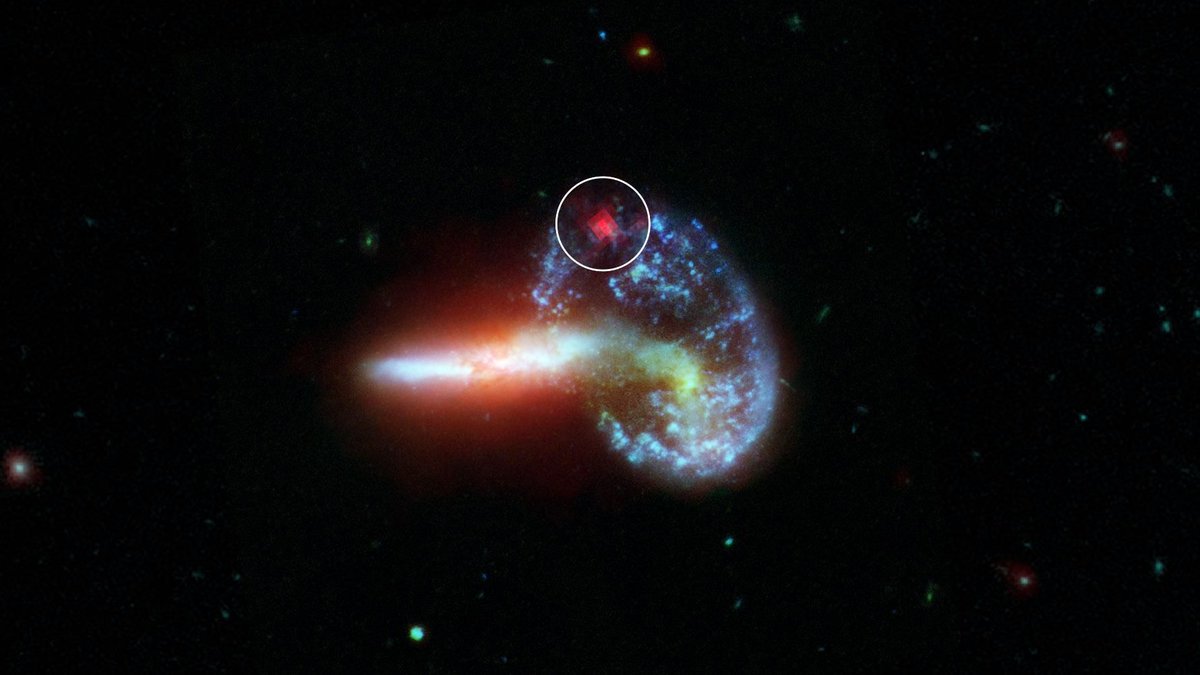When the poet Horace said “We are but dust and shadow”, he probably didn’t think that dust itself could create a shadow. But it can, and that shadow can obscure even some of the most powerful explosions in the universe. At least that’s the finding from new research from an international team using data from the recently retired Spitzer telescope. It turns out dust in far away galaxies can obscure supernovas.
Existing theoretical models have predicted almost twice the amount of supernovas that have been observed in the wider universe. More precisely, they overestimated the number of supernovae observed in the farther away parts of the universe. Scientists assumed that the missing supernovae did exist, they just weren’t capturable in the visible light spectrum. They were right.
Credit – NASA YouTube Channel
Spitzer is an infrared telescope, meaning it can peer through otherwise opaque material that other telescopes can’t see through. When it turned its attention to 40 relatively close by galaxies, it found 5 new supernovae that weren’t picked up by any optical telescope.
Five new supernovae might not sound like a lot, but it was for the relatively small amount of time Spitzer spent on the observation program and the relatively small part of the universe it was concentrating on. Extrapolating that number out to the whole of the universe, the number of supernovae jumps up to almost perfectly in line with theoretical expectations.
So the supernovae were in fact being obscured by something, and pretty quickly it became clear that the obscuring material was “dust”. Not the same kind of dust found in a house, nor even really the same kind of dust that is found on Earth, but interstellar dust that consists of particles about that size of a piece of grain, that when combined together has the same effect as smoke.
That dust permeates many galaxies, especially those that are farther away and “younger” than the Milky Way, meaning the dust has not yet had a chance to settle. In effect, the farther away and younger a galaxy is, the more likely it was to have its supernovae obscured by dust. Notably, observed numbers of supernovae in nearby galaxies, which don’t have as much star forming activity and are generally less dusty, were already more in line with theoretical predictions.
Luckily dust does not impede infrared light, which means Spitzer can pick up infrared emitting events that would otherwise be obscure to optical telescopes. Supernovae let off their fair share of infrared light (which can also be thought of as heat), so Spitzer was able to pick them up as well. It was still a challenge though, as supernovae in truly far away galaxies might not be strong enough to pick up on Earth.
To account for this, the 40 galaxies the researchers studied were closer to Earth, but were in specific types of galaxies that are known for being heavily shrouded in dust. These galaxies, known as luminous and ultra-luminous infrared galaxies (LIRG & ULIRG) made perfect candidates and the were close enough to pick up on a supernova with relatively short observational time as well as easy to observe with visible light spectra platforms.

Credit – NASA / JPL-Caltech
With this new data comes new models of both star death and formation. Such stellar activity is one of the pillars of astrophysics, and with a clearer view of that activity will come better understanding, and hopefully, models that can be used in other parts of the scientific world. So maybe dust doesn’t isn’t all that effective as a shadow after all.
Learn More:
JPL – Stars Are Exploding in Dusty Galaxies. We Just Can’t Always See Them
MNRAS – A Spitzer Survey for Dust-Obscured Supernovae
Sci-News – Spitzer Discovers Five Dust-Obscured Supernovae
UT – From the way These Stars Look, a Supernova is Inevitable
Lead Image:
Image of a galaxy from Spitzer and Hubble, with Spitzer’s contribution shown in the white circle, with the infrared light revealing a previously obscure supernova.
Credit – NASA / JPL-Caltech

